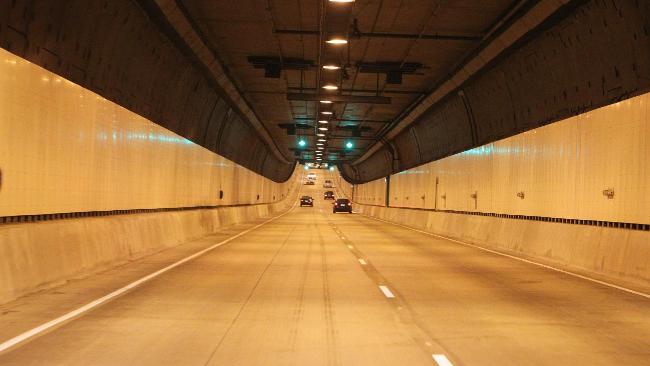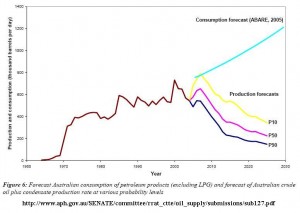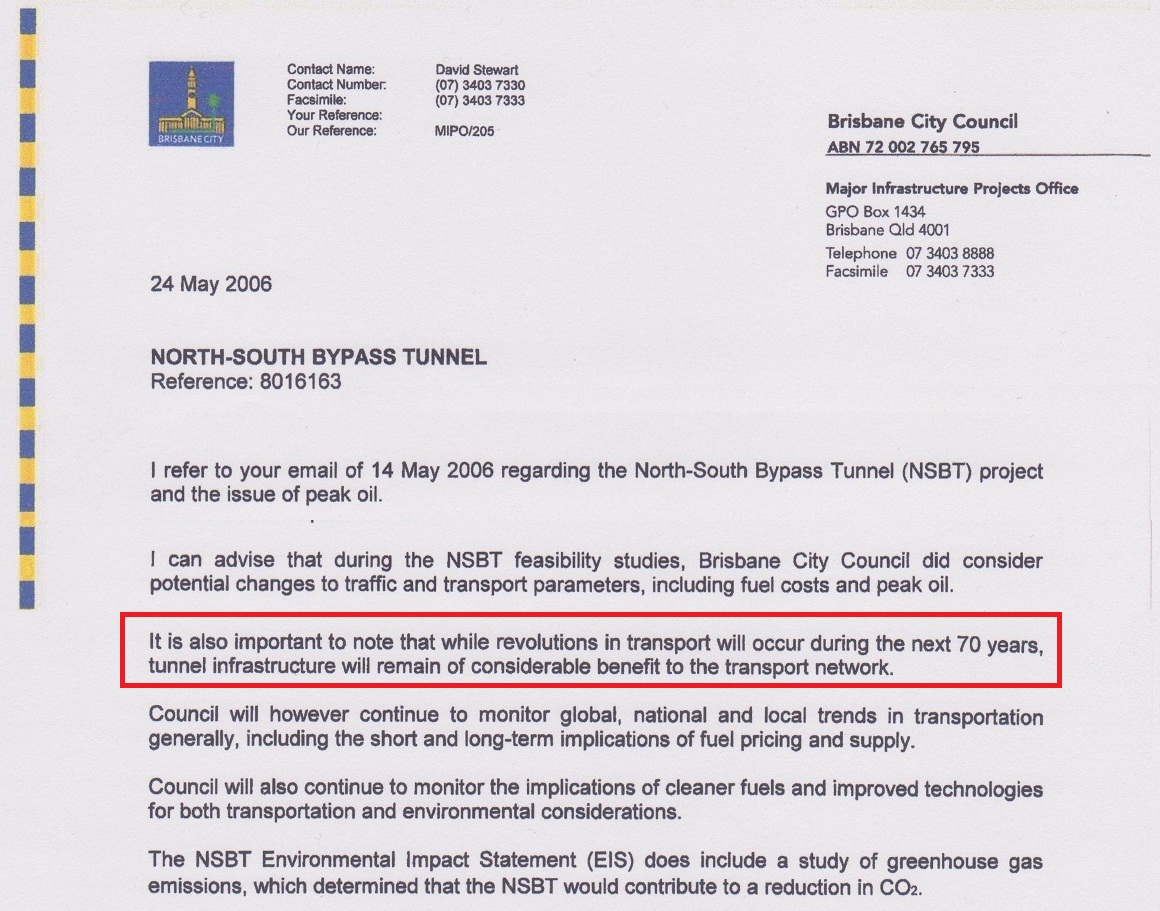Value of my advice ignored: AU$2.4 bn
Contents
(1) 28/4/2006 email to Queensland Minister for Transport warning him NOT to build the tunnel because of peak oil
(2) 3/5/2006 BCC acknowledged receipt of a similar email
(3) 24/5/2006 reply letter from BCC about a 70 year long transport revolution
(3a) 13/6/2006 Product Disclosure Statement $724 m stapled units River City Motorway
(3b) 3/7/2008 ASX release repeats traffic forecasts while oil prices at record peak
(4) 10/6/2010 “Brisbane Motorists bypass the Bypass Tunnel”
(5) 21/4/2010 Clem7 tunnel may end toll projects, admits Campbell Newman
(6) 30/9/2010 Clem7 firm warns of wind up
(7) 23/11/2010 Brisbane’s financial hole in the ground
(8) 23/11/2010 Reasons given to unitholders for the Clem7’s low patronage
(9) 21/12/2010 Clem7 uncertainty extended
(10) 4/2/2011 Clem 7 tunnel would never have been built based on actual traffic numbers
(11) 25/2/2011 Clem7 operator placed in receivership
(12) 8/3/2011 Clem7 price tipped as “bite-sized” $650m
(13) 15/4/2011 Investors sue RiverCity firm
(14) 30/5/2012 Councillors battle over Clem7’s worth
(15) 28/9/2013 Turning $3 bn into $618 m: Brisbane’s failed Clem7 tunnel sold off
(16) 22/9/2015 AECOM pays $280m to settle toll road dispute
——————
Clem Jones Tunnel (North South Bypass Tunnel)
http://www.dsdip.qld.gov.au/assessments-and-approvals/clem-jones-tunnel-formerly-north-south-bypass-tunnel.html
(1) Warning on peak oil
On 28/4/2006 I warned the Queensland Minister for Transport and Roads in an email:
Global oil supplies have reached a bumpy production plateau (graphs attached) and Australian oil production will drop like a stone after 2007 (Geoscience Australia graph attached)
Geoscience Australia, submission #127 to the Senate Inquiry on oil supplies
http://www.aph.gov.au/Parliamentary_Business/Committees/Senate/Rural_and_Regional_Affairs_and_Transport/Completed%20inquiries/2004-07/oil_supply/index
This is clearly not a good time to build a road tunnel. You should rather focus on the job to replace car traffic by developing public transport.
Peak oil is the beginning of the end of using planes, trucks and cars the way we know it.
I also referred to the NSW Inquiry into the Cross City Tunnel in Sydney so that lessons can be learnt
8/1/2006 How Cross City Tunnel Planners ignored peak oil
http://crudeoilpeak.info/how-cross-city-tunnel-planners-ignored-peak-oil
The receipt of this email was acknowledged 2/5/2006 saying the matter is receiving attention
(2) Another warning
A similar email was sent to the Brisbane City Council, received and acknowledged 3/5/2006 under OR20907912. I sent a reminder email on 14/5/2006 with following summary content:
Sep 2001: Prefeasibility Study
You might want to check whether under “traffic modelling” the availability of motor fuels over the period of 25 years was investigated
2002: 2 Committees researching the financial suitability
Please look in the minutes of these committee meetings or in their respective reports which oil price was assumed to calculate a financial viability and compare them with today’s oil prices
2005: EIS
If this EIS did not contain a fuel availability analysis over 25 years, it was of little value. If the relevant State Government procedures did not require such an analysis, then this was a failure of the relevant authority and/or the legislator. The consultant who prepared the EIS should have warned the Government that – in view of the approaching oil crisis the first signs of which were clearly visible in 2005 even for the non-expert – such an analysis was necessary.
I also refrerred to my submission to the Senate Inquiry on future oil supplies
24/2/2006 Submission #69 to the Senate Inquiry on Oil Supplies
http://crudeoilpeak.info/submission-69-to-the-senate-inquiry-on-oil-supplies
(3) Response: 70 year long transport revolution
24/5/2006 In response, I received a letter from the Brisbane City Council saying they expect a “70 year long transport revolution” and that tunnel infrastructure will remain of considerable benefit
(3a) 13/6/2006 Offer $ 724 million stapled units River City Motorway. The Product Disclosure Statement contains the traffic estimates from Maunsell dated 13/6/2006 (page 91)
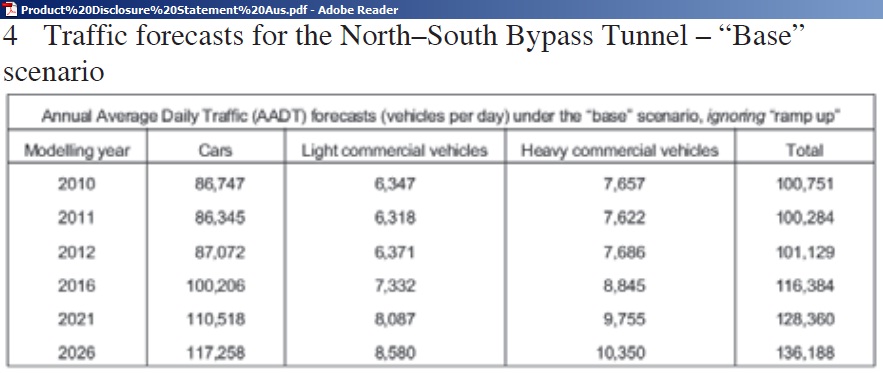 http://www.rivercitymotorway.com.au/userfiles/file/Product%20Disclosure%20Statement.pdf
http://www.rivercitymotorway.com.au/userfiles/file/Product%20Disclosure%20Statement.pdf
What is important is the risk analysis. We find: (extracts related to oil, fuels etc):
8.2.1 Traffi c volumes and toll levels Returns to Investors during the Operating Phase will depend on how many vehicles use the Tunnel and the level of tolls. Traffic volumes may be affected by factors such as general traffi c levels in the area, the quality and proximity of alternative roads and other transport infrastructure, toll rates and fuel prices. (page 72)
A fuel price warning is materially different from a peak oil warning because peak oil means permanent decline of oil production after the peak. At the time of the PDS sufficient peak oil warnings were given, e.g. in Matthew Simmon’s 2005 book “The coming Saudi Oil Shock and the World Economy”. In May 2005 Premier Peter Beattie established the Queensland Oil Vulnerability Taskforce. The question is why a decision on an oil dependent project like a road tunnel was done before the results of the taskforce deliberations were publsihed in April 2007.
Given a 45 year concession period as shown in the refinancing and debt repayment schedule on page 65 (shown below), the PDS should have warned of peak oil or at least mentioned the ongoing work of the Taskforce. Therefore, the PDS was fundamentally flawed.
 Debt refinancing and repayment schedule in the PDS
Debt refinancing and repayment schedule in the PDS
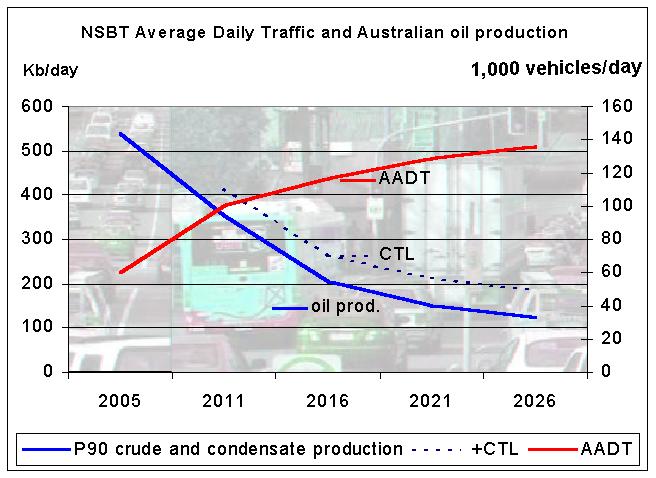 This graph shows estimated AADT versus Australian P90 oil production from the above GA projection. The emerging gap is unbridgeable.
This graph shows estimated AADT versus Australian P90 oil production from the above GA projection. The emerging gap is unbridgeable.
(3b) 3/7/2008 In an ASX press release River City Motorway continues to publish traffic projections without mentioning oil supply risks. This happens as oil prices are at an all time high
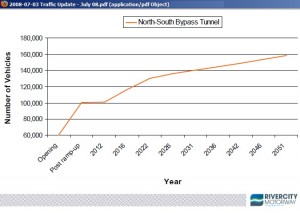 It ignored the results of the report of the Queensland Government’s Oil Vulnerability Taskforce referred to above. It also ignored the peak oil warnings as presented by Dr. Bakhtiari in a hearing to the Senate Inquiry on oil supplies and as documented in the Hansard
It ignored the results of the report of the Queensland Government’s Oil Vulnerability Taskforce referred to above. It also ignored the peak oil warnings as presented by Dr. Bakhtiari in a hearing to the Senate Inquiry on oil supplies and as documented in the Hansard
http://www.aph.gov.au/Parliamentary_Business/Committees/Senate_Committees?url=@Hansard/S9515.pdf
So there are multiple failures here.
(4) Motorists bypass the Bypass Tunnel
10/6/2010 Brisbane Motorists bypass the Bypass Tunnel
http://crudeoilpeak.info/brisbane-motorists-bypass-the-bypass-tunnel
(5) Belatedly it danws on the Brisbane Mayor
Clem7 tunnel may end toll projects, admits Campbell Newman
21/4/2010
“While Clem7 operators Rivercity Motorway last week said traffic was running at 20,000 vehicles a day, the council was projecting 38,000 vehicles a day.”
(6) Clem7 firm warns of wind up
30/9/2010
RiverCity Motorway, releasing its audited final financial report for last financial year, today warned the stockmarket its cash reserves would only support its operations for about the next 12 months.
http://www.brisbanetimes.com.au/business/clem7-firm-warns-of-windup-20100930-15y6r.html
(7) Brisbane’s financial hole in the ground
23/11/2010
RCM is one step from calling in receivers, announcing yesterday it had asked its syndicate of 24 banks to give it two year’s breathing space until Airport Link opens in mid-2012. That decision will be made in late December.
http://www.brisbanetimes.com.au/business/clem7-has-a-month-to-turn-things-round-20101122-183yn.html
The motoring public’s reluctance to use the tunnel is costing RiverCity Motorway about $7.1 million each month, with about $8 million a month being consumed from the company’s $86 million in cash reserves.
“Given the current traffic shortfall, it is apparent that Clem7 traffic volumes would need to more than double for there to be any reasonable prospect of recapitalisation to preserve equity in the project,” he said.
In other words, the 30,000 vehicles a day now using Clem7 would have to double to 60,000 by late 2012.
(8) Reasons given to unitholders for the Clem7’s low patronage
23/11/2010
- Lower than expected traffic growth on Brisbane’s inner-city roads. For example, traffic on the Captain Cook Bridge (Riverside Expressway) has increased just 0.4 per cent;
- Significant construction work on the roads leading into Clem7, in particular Lutwyche Road where Airport Link is under construction, the Inner City Bypass, Shafston Avenue, Pacific Motorway and Ipswich Road.
Mr Morris said: “The opening of Airport Link will mark the first occasion when the approach roads for Clem7 should be free of traffic congestion caused by construction.” - Brisbane motorists are different to Sydney and Melbourne motorists.
Mr Morris said: “Clem7 motorists also appear to have a different perception of value compared to motorists in Sydney and Melbourne.
“In those more established toll road markets, motorists don’t only place a value on the time saved, but they place additional value on benefits such as reliability, connectivity and the driving experience.
“That doesn’t appear to be the case on the Clem7.” - Different road development predicted in the original planning. RCM assumed the Gateway Motorway duplication would be finished in 2011, well after Clem7 opened in March, but it has already been open for much of 2010.
The improvements to the Gateway Motorway make it easier for motorists to use Kingsford Smith Drive.
RCM also thought the Go Between Bridge would open in 2016, however it opened in June 2010.
Main Street and the Story Bridge were supposed to have bus lanes. That has not yet happened. - The tolls are seen as too high. In the first three weeks after the tunnel opened in March, before tolls were introduced, an average of 59,109 vehicles used the tunnel each day.
When tolling started in April – even at $2.95 – the number of vehicles dropped to an average of 21,178 per day.
Tolls were dropped to $2 on July 1, and this kicked the number of daily users to 27, 595 per day.
Since then it has grown to an average of 31,975 on work days and 27,876 per day averaged over an entire week.
Last week, the fare was increased from $2 to $3 and it will reviewed again early in 2011. The jump to $3 from $2 has not made a big difference to the traffic numbers.
Mr Cleary said he thought this was about the right price.
“While it is only one week since these new tolls were introduced, the result has been a small reduction in daily traffic, but increased revenue,” he said.
“It appears that the $2 toll has achieved its aim and the traffic that was encouraged to try the Clem7 is mostly staying.”
http://www.brisbanetimes.com.au/business/brisbanes-financial-hole-in-the-ground-20101122-18445.html
Not a single word on peak oil which – together with accumulated debt – triggered the GFC and the subsequent economic problems.
(9) Clem7 uncertainty extended
21/12/2010
“The troubled company behind the Clem7 tunnel won’t know whether a consortium of 24 banks will agree to a survival deal for at least another six weeks.
RiverCity Motorway is relying on a “pay if you can” agreement with the banks to avoid bringing in receivers after declaring it could not meet its interest payments beyond September next year.”
http://www.brisbanetimes.com.au/business/clem7-uncertainty-extended-20101220-192q0.html
(10) Clem 7 tunnel would never have been built based on actual traffic numbers
4/2/2011
RIVERCITY Motorway has made a drastic adjustment to its forecast traffic flows after a new assessment suggested it would be lucky to see half the number of vehicles using its Clem7 tunnel by 2020 that it once hoped would be using it now.
Had RiverCity’s original stock exchange float been attempted with these new figures, the tunnel would never have been built, at least with private equity involvement.
RiverCity floated on the Australian Securities Exchange in 2006, raising nearly $690 million at $1 a unit, with 50c of that payment deferred for 12 months.
Its units were trading yesterday at 0.8c each – effectively wiping out the $690 million put in by people and institutions, who now look like mug punters.
25/2/2011
(11) Clem7 operator placed in receivership
The company behind Brisbane’s Clem 7 toll tunnel has been placed in receivership.
RiverCity Motorway collapsed owing $1.3 billion to a syndicate of 24 banks.
It is not even a year since the seven-kilometre tunnel was opened. Many blame the company behind the traffic forecasts, Aecom, because patronage on the road is less than a quarter of its original predictions.
Some of the predictions were as high as 94,000 vehicles a day, but despite the toll being slashed only 22,000 motorists are using the tunnel daily.
People who bought shares for $1 before the road was built saw their investments fall almost 100 per cent in value before trading was suspended on the stock exchange.
Brisbane Lord Mayor Campbell Newman is a big advocate of the tunnel.
“My reaction is of course that I’m very sad for small investors who’ve lost money, but having said that, the fact remains that this project, this tunnel will be open for 100 years,” he said.
“It’ll deliver congestion-busting benefits for many generations of Brisbane motorists. It can’t be taken away, it can’t be shut down or closed, so it will be here delivering what it’s meant to deliver in the future.”
http://www.abc.net.au/news/stories/2011/02/25/3149327.htm
100 years? When looking at the unrest across the Middle East, and this in year#6 of peak oil, how long will it take until that impacts on oil supplies and leads to an oil import crisis ? Where are the millions of EVs to replace petrol cars? And if the rest of the world were as coal addicted as Queensland, we would have a 5 m sea level rise, flooding large areas of the Clem7 catchment.
KERRY O’BRIEN: What are your particular fears with regard to the melting of the polar ice caps?
JAMES HANSEN: Well, the problem is that the climate system in general has a lot of inertia and that means that it takes time for the changes to begin to occur but then, once they do get under way, it becomes very difficult to stop them and that is true in spades for the ice sheets. If we once begin to disintegrate it will become very difficult, if not impossible, to stop them and we are beginning to see now on both Greenland and west Antarctica disintegration of those ice sheets. They’re both losing ice at a rate of about 150 cubic kilometres per year and that’s still not a huge sea level rise. Sea level rise is now going up about 3.5 centimetres per decade. So that’s more than double what it was 50 years ago. But it’s still not disastrous; it’s a problem, but it’s not disastrous. But the potential is for a much larger sea level rise. If we get warming of two or three degrees Celsius, then I would expect that both West Antarctica and parts of Greenland would end up in the ocean, and the last time we had an ice sheet disintegrate, sea level went up at a rate of 5 metres in a century, or one metre every 20 years. That is a real disaster, and that’s what we have to avoid.
http://www.abc.net.au/7.30/content/2007/s1870955.htm
Clearly, Lord Mayor Newman has understood nothing, absolutely nothing.
28/2/2011
4 Reasons for the collapse: no proper risk analysis
http://crudeoilpeak.info/brisbanes-clem7-road-tunnel-in-receivership
(12) Clem7 price tipped as “bite-sized” $650m
8/3/2011
BRISBANE’S failed $3 billion Clem7 tunnel has been described by a potential buyer as a ”bite-sized” asset that could attract interest from medium-sized pension and infrastructure funds.
RiverCity Motorway, the owner of the tunnel under the Brisbane River, was placed in receivership two weeks ago. Analysts expect the tunnel to sell for less than $650 million – a discount of at least 50 per cent on its bank debt of $1.3 billion.
http://www.smh.com.au/business/clem7-price-tipped-as-bitesized-650m-20110307-1bl8e.html
(13) Investors sue RiverCity firm
15/4/2011
INSTITUTIONAL and retail investors will join a $700 million class action against the traffic modelling forecaster AECOM over allegations its forecasts for the tollroad operator RiverCity Motorways were deceptive and misleading.
RiverCity, which listed on the ASX in June 2006 and collapsed two months ago owing banks $1.3 billion, became a financial black hole after traffic flows failed to live up to traffic forecasts. These forecasts were included in a product disclosure statement (PDS) to raise capital from shareholders. A different set of traffic forecasts were provided to the bank.
The litigation funder IMF will bankroll the class action, claiming AECOM (previously Maunsell Australia) failed to provide investors with proper disclosure on the various sets of figures it prepared.
http://www.smh.com.au/business/investors-sue-rivercity-firm-20110414-1dg0s.html
(14) Councillors battle over Clem7’s worth
30/5/2012
The Labor opposition continues to pressure Brisbane City Council over the failed Clem7 tunnel in the lead-up to the release of the council budget on June 20, claiming City Hall still owed more than the tunnel is worth.
Labor Finance Committee spokesman Kim Flesser said the written-down value of the tunnel, built by River City Motorway, was now at $258 million, while Brisbane City Council still owed $439 million on its Clem7 loan.
‘‘We pumped $773 million into that project, we still owe $439 million and the independent assessment says the tunnel is worth $258 million,’’ Cr Flesser said at a council meeting last night.
His claim was disputed by Brisbane City Council’s Finance Committee chairman, Julian Simmonds.
‘’That is not the value of the tunnel, that is the value of the tolling rights. Which is directly influenced by the amount of traffic moving through the tunnel, as the Lord Mayor has already pointed out,” he said.
RiverCity Motorway had a 45-year concession to run the tunnel.
RiverCity Motorway went into receivership in 2011, after issuing a $1.5 billion write-down of the book value of the Clem7 (from $1.67 billion to $250 million) in August 2010 after poor traffic figures over the first four months after it opened.
Maunsell, now known as AECOM, originally estimated Clem7 would attract 60,000 trips a day after the tunnel had been open for a month and 100,000 trips a day after 18 months.
RiverCity Motorway eventually went into receivership on February 25, 2011 when administrators Korda Mentha were appointed after traffic numbers slumped to around 27,000 a day.
A fortnight ago it was confirmed Korda Mentha was attempting to sue AECOM for providing the over-inflated tunnel traffic estimates for Clem7.
AECOM’s head of communications, Trevor Robertson, told News Limited newspapers on May 19 AECOM was not responsible and the claim was ”totally without merit”.
brisbanetimes.com.au in November 2009 questioned the Maunsell estimates before the tunnel opened.
Cr Flesser told brisbanetimes.com.au last week Brisbane ratepayers had contributed a net total cost of $760 million to Clem7.
‘‘That tunnel is a financial disaster, not only for RiverCity Motorway, but also for this council,’’ Cr Flesser said.
Brisbane City Council Opposition Leader Milton Dick said at council’s borrowing rate of 6.24 per cent, the cost of interest repayments on the tunnel debt was $27.4 million annually.
Earlier Lord Mayor Graham Quirk accused Cr Flesser of hypocrisy, telling the Council chambers Cr Flesser was part of the team of councillors who ‘‘signed off” on Clem7.
(15) Clem7 tunnel sold at a loss of $2.4 bn
28/9/2013
Turning $3 bn into $618 m: Brisbane’s failed Clem7 tunnel sold off
More than two years after it was placed in receivership, Brisbane’s Clem7 tunnel has been sold to Queensland Motorways for $618 million – a fraction of the $3 billion it cost to build.
The tollroad’s receiver, KordaMentha, has selected Queensland Motorways ahead of three other consortiums including one led by UBS Infrastructure Fund.
The $618 million price tag will include $33 million in taxes and other costs.
In striking parallels with other failed public-private projects such as Sydney’s Cross City and Lane Cove tunnels, the Brisbane tunnel failed to attract anywhere near the number of motorists that were forecast.
That was despite RiverCity using almost every means possible, including slashing tolls, to entice motorists to use the tunnel named after a former Brisbane lord mayor, Clem Jones
The 6.8-kilometre tollway includes a 4.8-kilometre tunnel linking roads on each side of the Brisbane River.
(16) AECOM pays $280m to settle toll road dispute
22/9/2015
“The Australian unit of Los ¬Angeles-based engineering design firm AECOM Technology has settled a major lawsuit over forecasts it made for a toll road in Australia, paying $280 million ($US201m) to creditors, documents recently filed with Australia’s corporate regulator show.
The landmark settlement ends a costly saga for the firm, which received only a few million dollars in fees for its forecasting work almost a decade ago but was held accountable when the project went bankrupt.
The toll road and other projects that went bankrupt along Australia’s eastern seaboard, including Brisbane’s Airport Link in Queensland, have tarnished a once-popular model for infrastructure funding in the country at a time when Australia desperately needs to upgrade its transport network.
…
AECOM’s Australian subsidiary has been battling the claim against it for several years, as it sought to avoid paying the $1.68 billion lenders to the RiverCity toll road project believed they were owed after they relied on its forecasts. The toll road cost $2.2 billion to build but was sold for only $618 million in 2013, after it attracted only a fraction of the traffic AECOM had forecast.”
http://www.theaustralian.com.au/business/aecom-pays-280m-to-settle-toll-road-dispute/story-e6frg8zx-1227537726314
